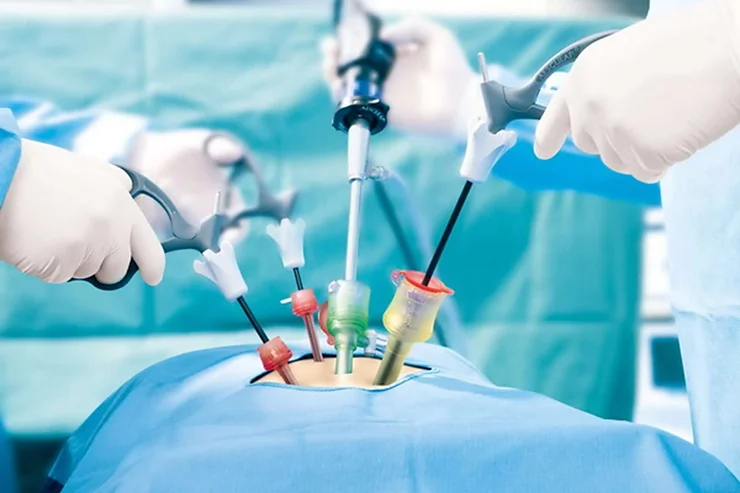
Surgery has come a long way from the days of open, invasive procedures that left patients with significant recovery times and visible scars. Today, advancements in medical technology have introduced minimally invasive techniques, such as laparoscopy, which are revolutionizing the field of general surgery. In this blog post, we’ll explore what general surgery and laparoscopy entail, their benefits, and how these modern techniques are shaping patient care.
What is General Surgery?
General surgery is a branch of surgery that focuses on the treatment of a wide range of conditions affecting various organs and systems. It encompasses procedures related to:
- Digestive System: Operations on the stomach, intestines, liver, pancreas, and gallbladder.
- Endocrine System: Surgery on glands such as the thyroid and adrenal glands.
- Abdominal Wall: Repairing hernias and other issues.
- Breast: Procedures for benign and malignant conditions.
- Trauma: Emergency surgeries for injuries from accidents or violence.
General surgeons are trained to handle a broad spectrum of conditions and are equipped with the skills to perform both traditional open surgeries and minimally invasive techniques like laparoscopy.
What is Laparoscopy?
Laparoscopy, also known as minimally invasive surgery or keyhole surgery, is a technique that allows surgeons to perform operations through small incisions using specialized instruments and a camera. Unlike traditional open surgery, which requires larger incisions to access internal organs, laparoscopy involves making several tiny incisions, usually about 0.5 to 1 cm in size.
Here’s how laparoscopy works:
- Insertion of Instruments: A small incision is made, through which a laparoscope (a thin tube with a camera) is inserted. Additional small incisions are made for other surgical instruments.
- Visualization: The camera provides a real-time view of the surgical area on a monitor, allowing the surgeon to navigate and perform the procedure with precision.
- Surgical Intervention: Specialized tools are used to perform the surgery, guided by the visual information from the camera.
Benefits of Laparoscopy
Laparoscopy offers several advantages over traditional open surgery, including:
- Reduced Recovery Time: Smaller incisions mean less damage to surrounding tissues, leading to faster healing and shorter hospital stays.
- Minimized Scarring: Tiny incisions result in minimal scarring, which is both aesthetically pleasing and reduces the risk of wound complications.
- Less Pain: Patients typically experience less postoperative pain compared to open surgery, which often translates to reduced need for pain medications.
- Faster Return to Normal Activities: With less discomfort and quicker recovery, patients can usually resume their normal activities and return to work sooner.
- Reduced Risk of Infection: Smaller incisions lower the risk of infection compared to larger open wounds.
Common Procedures Performed by Laparoscopy
Laparoscopy is used for a variety of surgical procedures, including:
- Appendectomy: Removal of the appendix, typically performed for appendicitis.
- Cholecystectomy: Removal of the gallbladder, often due to gallstones.
- Hernia Repair: Correction of hernias in the abdominal wall or groin.
- Gastric Bypass: Weight-loss surgery that involves altering the digestive system to aid in weight management.
- Diagnostic Laparoscopy: Examination of the abdominal organs to diagnose conditions or confirm the extent of disease.
Preparing for Laparoscopic Surgery
Preparation for laparoscopy is similar to traditional surgery but typically involves fewer preoperative restrictions. Patients may need to:
- Follow Dietary Restrictions: Certain foods or liquids might need to be avoided before surgery.
- Undergo Preoperative Testing: Blood tests, imaging, or other diagnostic procedures may be required.
- Arrange for Postoperative Care: Even though recovery is quicker, having someone to assist you after surgery can be beneficial.
Recovery and Aftercare
Post-laparoscopy recovery is generally swift, but it’s important to follow your surgeon’s instructions for optimal results:
- Follow-Up Appointments: Attend all scheduled follow-ups to monitor your recovery.
- Gradual Resumption of Activities: Start with light activities and gradually return to more strenuous tasks as advised by your surgeon.
- Watch for Complications: Be aware of signs of infection, excessive pain, or other complications and seek medical advice if needed.
Conclusion
General surgery and laparoscopy represent two crucial aspects of modern surgical care, offering diverse solutions for a range of medical conditions. Laparoscopy, in particular, has transformed how many procedures are performed, making surgery less invasive and recovery faster. By understanding these surgical techniques, patients can make informed decisions about their care and appreciate the advancements that have enhanced surgical outcomes and overall health.
Whether you’re considering a surgical procedure or just interested in the latest medical technologies, knowing the benefits and options available empowers you to take control of your health journey. As always, consult with your healthcare provider to determine the best approach for your individual needs.


